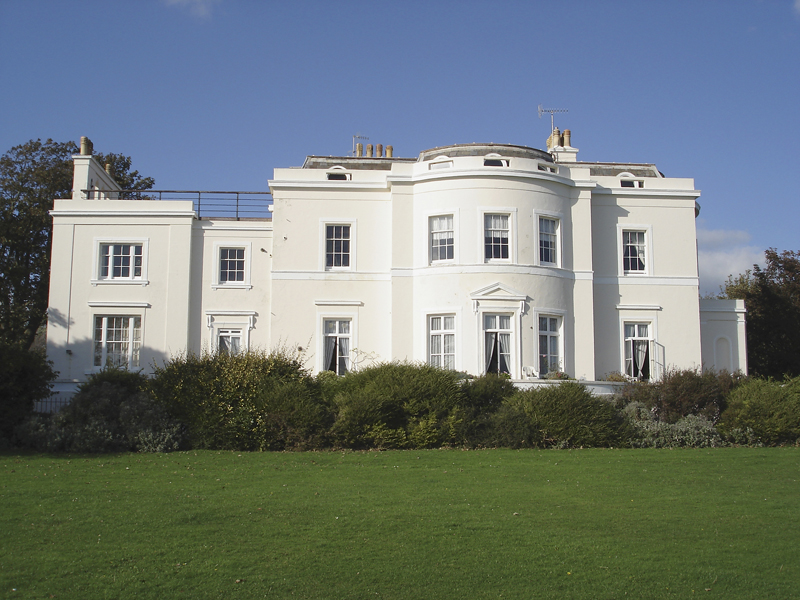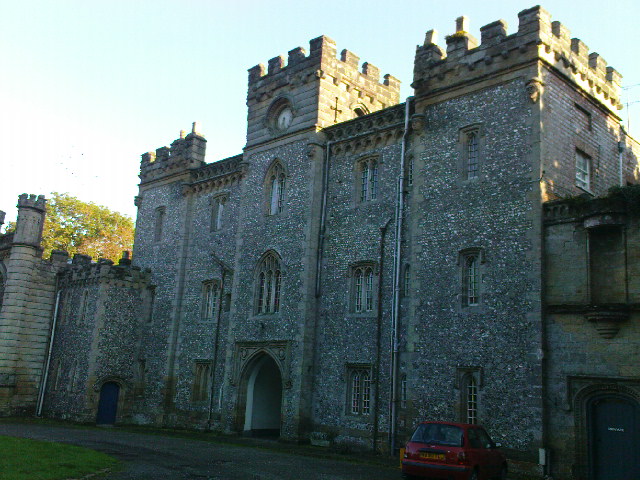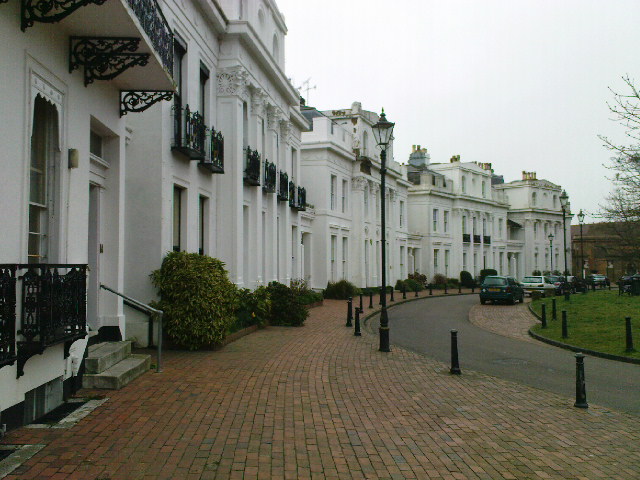Listed buildings in Worthing on:
[Wikipedia]
[Google]
[Amazon]
 Worthing, a town with
Worthing, a town with





 Worthing, a town with
Worthing, a town with borough status
Borough status is granted by royal charter to local government districts in England, Wales and Northern Ireland. The status is purely honorary, and does not give any additional powers to the council or inhabitants of the district. In Scotland, s ...
in the English county of West Sussex, has 212 buildings with listed status
In the United Kingdom, a listed building or listed structure is one that has been placed on one of the four statutory lists maintained by Historic England in England, Historic Environment Scotland in Scotland, in Wales, and the Northern Irel ...
. The Borough of Worthing covers an area of Elleray (1998), p. 36. on the south coast of England, facing the English Channel. The town's development in the early 19th century coincided with nearby Brighton
Brighton () is a seaside resort and one of the two main areas of the City of Brighton and Hove in the county of East Sussex, England. It is located south of London.
Archaeological evidence of settlement in the area dates back to the Bronze A ...
's rise as a famous, fashionable resort, and Worthing became a quiet seaside town with a large stock of Victorian
Victorian or Victorians may refer to:
19th century
* Victorian era, British history during Queen Victoria's 19th-century reign
** Victorian architecture
** Victorian house
** Victorian decorative arts
** Victorian fashion
** Victorian literature ...
buildings. Residential growth in the 20th century absorbed nearby villages, and older houses, churches and mansions became part of the borough. The Town and Country Planning Act 1947, an act of Parliament effective from 1948, introduced the concept of "listing" buildings of architectural and historical interest, and Worthing Borough Council nominated 90 buildings at that time. Elleray (1998), 63. More have since been added, but others have been demolished. As of 2009, Worthing has three buildings of Grade I status, 11 listed at Grade II*, 196 of Grade II status and three at the equivalent Grade C.
In England, a building or structure is defined as "listed" when it is placed on a statutory register of buildings of "special architectural or historic interest" by the Secretary of State for Culture, Media and Sport, a Government department, in accordance with the Planning (Listed Buildings and Conservation Areas) Act 1990
The Planning (Listed Buildings and Conservation Areas) Act 1990 is an Act of Parliament of the United Kingdom that altered the laws on granting of planning permission for building works, notably including those of the listed building system in En ...
(a successor to the 1947 act). English Heritage, a non-departmental public body, acts as an agency of this department to administer the process and advise the department on relevant issues. There are three grades of listing status. Grade I, the highest, is defined as being of "exceptional interest"; Grade II* is used for "particularly important buildings of more than special interest"; and Grade II, the lowest, is used for buildings of "special interest". Some Anglican
Anglicanism is a Western Christian tradition that has developed from the practices, liturgy, and identity of the Church of England following the English Reformation, in the context of the Protestant Reformation in Europe. It is one of th ...
churches are still graded according to an old system in which Grades A, B and C were equivalent to I, II* and II respectively.
History of listed buildings and conservation in Worthing
From its origins as a fishing village, Worthing grew into a seaside resort in the early 19th century on the strength of royal patronage, the positive effect of nearby Brighton, the excellent climate and new road links to London. Elleray (1998), p. 42. Kerridge & Standing (2000), p. 81. Kerridge & Standing (2000), p. 88. Land was quickly sold for speculative developments such as Liverpool Terrace and Park Crescent, Nairn & Pevsner (1965), p. 388. individual residences such as Beach House and Warwick House, Elleray (1985), Introduction. attractions like the Theatre Royal and churches such as St Paul's and Christ Church. Elleray (1998), p. 50. Elleray (1998), p. 47. Until the postwar Labour government passed the Town and Country Planning Act in 1947, there was no official system governing the preservation of historically significant buildings, and the rapid expansion of the town from the late 19th century onwards resulted in urban decay affecting the old town centre and demands to allow the clearance of buildings considered "obsolete and derelict". Historically, despite the limited protection offered by listed status, the borough has had a poor record on conserving buildings of historic interest; Elleray (1998), p. 62. architectural historian Ian Nairn described it as an "exasperating town ... full of rchitecturallyignoble endings". Nairn & Pevsner (1965), p. 386. A 1947 plan byCharles Cowles-Voysey
Charles Cowles-Voysey (24 June 1889 – 10 April 1981) was an English architect.
Career
Charles Voysey studied at the Architectural Association School and the UCL Bartlett School of Architecture. Between 1909 and 1912 he was articled to Horace ...
proposing the complete demolition and redevelopment of central Worthing was never implemented, but piecemeal changes since then (especially during the 1960s) have had a similar effect in removing many historically significant buildings. Indifference on the part of residents has been suggested: the demolition in 1970 of the old Theatre Royal—described as a "very precious survival" Nairn & Pevsner (1965), p. 387. five years earlier—went ahead with no opposition. A conservation society was formed in 1973—much later than in similar towns; despite low levels of public support, it successfully saved Beach House from demolition in the late 1970s.
Listed buildings demolished or lost to redevelopment in Worthing include the old rectory
A clergy house is the residence, or former residence, of one or more priests or ministers of religion. Residences of this type can have a variety of names, such as manse, parsonage, rectory or vicarage.
Function
A clergy house is typically ow ...
at Broadwater, West Tarring's original Church House, most of the Humphrys Almshouses, the old Theatre Royal and the adjacent Omega Cottage. Elleray (1985), unpaginated afterword.
Houses and commercial buildings—in some cases converted to other uses—make up many of Worthing's listed buildings, and several churches also feature. Other structures with listed status include an ornate cast-iron lamp-post—the only survivor of more than 100 installed when Worthing first received electricity, and saved from demolition in 1975; Elleray (1985), §127. a K6 telephone kiosk in the Steyne, a seafront square; an 18th-century dovecote on a site where one has existed since the 13th century; and a recent addition: a 1989 sculpture by Elisabeth Frink consisting of four gigantic male heads cast in bronze
Bronze is an alloy consisting primarily of copper, commonly with about 12–12.5% tin and often with the addition of other metals (including aluminium, manganese, nickel, or zinc) and sometimes non-metals, such as phosphorus, or metalloids such ...
and set on a stucco
Stucco or render is a construction material made of aggregates, a binder, and water. Stucco is applied wet and hardens to a very dense solid. It is used as a decorative coating for walls and ceilings, exterior walls, and as a sculptural and a ...
ed loggia.
Delistings and anomalies
One of Worthing's earliest and most important hotels was Warne's Hotel. It was built as a five-house block called York Terrace in the 1820s, reputedly byJohn Rebecca
John Biagio Rebecca (died 1847), the son of Italian-born decorative painter Biagio Rebecca (1735–1808), was an architect of many buildings in Sussex and London. He lived in London's Leicester Square from 1825 to 1827 but many of his buildings w ...
. It was listed at Grade II on 11 October 1949. In the 1870s, the hotel was enlarged when an adjacent terrace of houses was taken over. This was listed separately, also at Grade II, on 21 May 1976. The hotel closed in 1985, and efforts to conserve it were thwarted when it was gutted by fire in 1987. Both parts of the building were demolished in 1992. Elleray (1998), p. 91. The 1870s corner block was delisted (removed from the statutory list) on 19 October 1998, but the main block has not been officially delisted.
Most of the houses in Warwick Place, a short street leading off the Brighton Road, are listed, but No. 3 Warwick Place has lost its status. The three-storey cobbled flint building's structural features include a bay window and a cornice
In architecture, a cornice (from the Italian ''cornice'' meaning "ledge") is generally any horizontal decorative moulding that crowns a building or furniture element—for example, the cornice over a door or window, around the top edge of a ...
supported by a modillion
A modillion is an ornate bracket, more horizontal in shape and less imposing than a corbel. They are often seen underneath a cornice which it helps to support. Modillions are more elaborate than dentils (literally translated as small teeth). All ...
. It was listed at Grade II on 21 May 1976 and delisted on 1 August 2000.
The town had an Odeon cinema between 1934 and 1988, when it was demolished. It stood at the head of Liverpool Terrace, and was built in the Art Deco style with a prominent belvedere Belvedere (from Italian, meaning "beautiful sight") may refer to:
Places
Australia
*Belvedere, Queensland, a locality in the Cassowary Coast Region
Africa
*Belvedere (Casablanca), a neighborhood in Casablanca, Morocco
*Belvedere, Harare, Zim ...
. The 1,600-capacity building cost £40,700. Elleray (1998), p. 58. Elleray (1998), p. 94. It was listed at Grade II on 26 March 1987, after its closure, but was removed from the statutory list on 27 July 1987.
On Marine Parade, numbers 66 and 67—part of the former Trafalgar Terrace—were listed in 1974. The four-storey houses dated from the early 19th century, and were bow-fronted and stuccoed. They were subsequently demolished, and a modern block of flats now stands on the site. Elleray (1998), p. 135. Elleray (1985), §102. They have not been officially delisted.
St Mary's Farmhouse in Durrington had two attendant barns, which were listed separately from the house (along with its front garden wall) to reflect their architectural value as a group. After the farmhouse was damaged by arsonists in 1978, it was saved from threatened demolition, but the barns were knocked down. Elleray (1985), §189. Elleray (1998), p. 124. One lay diagonally across the southwest corner of the farmhouse grounds; it was built mainly of flint and had a hipped roof of thatch. The other, of similar materials but with a partly gabled roof with a weatherboarded
Clapboard (), also called bevel siding, lap siding, and weatherboard, with regional variation in the definition of these terms, is wooden siding of a building in the form of horizontal boards, often overlapping.
''Clapboard'' in modern America ...
exterior, stood south of the house. An adjacent outbuilding, with a pentice roof, was included in its listing. Despite their demolition, they have not been officially delisted.
English Heritage's former listing system for Anglican churches, in which Grades A, B and C were used instead of I, II* and II respectively, has not been eliminated completely. St Andrew's (central Worthing), St Botolph's and St George's Churches are graded C instead of II. St Mary's Church at Broadwater was originally listed at Grade B, but has since been upgraded to Grade I.
Castle Goring and its associated buildings are very close to the border with the neighbouring district of Arun. Castle Goring Lodge was incorrectly classified by English Heritage as being in the civil parish of Clapham in Arun, but Worthing Borough Council's more recently updated listed building register correctly identifies its location as Worthing.
Listed buildings


References
Notes
Bibliography
* * * * * * * * * * * * {{DEFAULTSORT:Listed Buildings In Worthing Listed buildings in West Sussex Worthing Buildings and structures in Worthing Lists of listed buildings in West Sussex